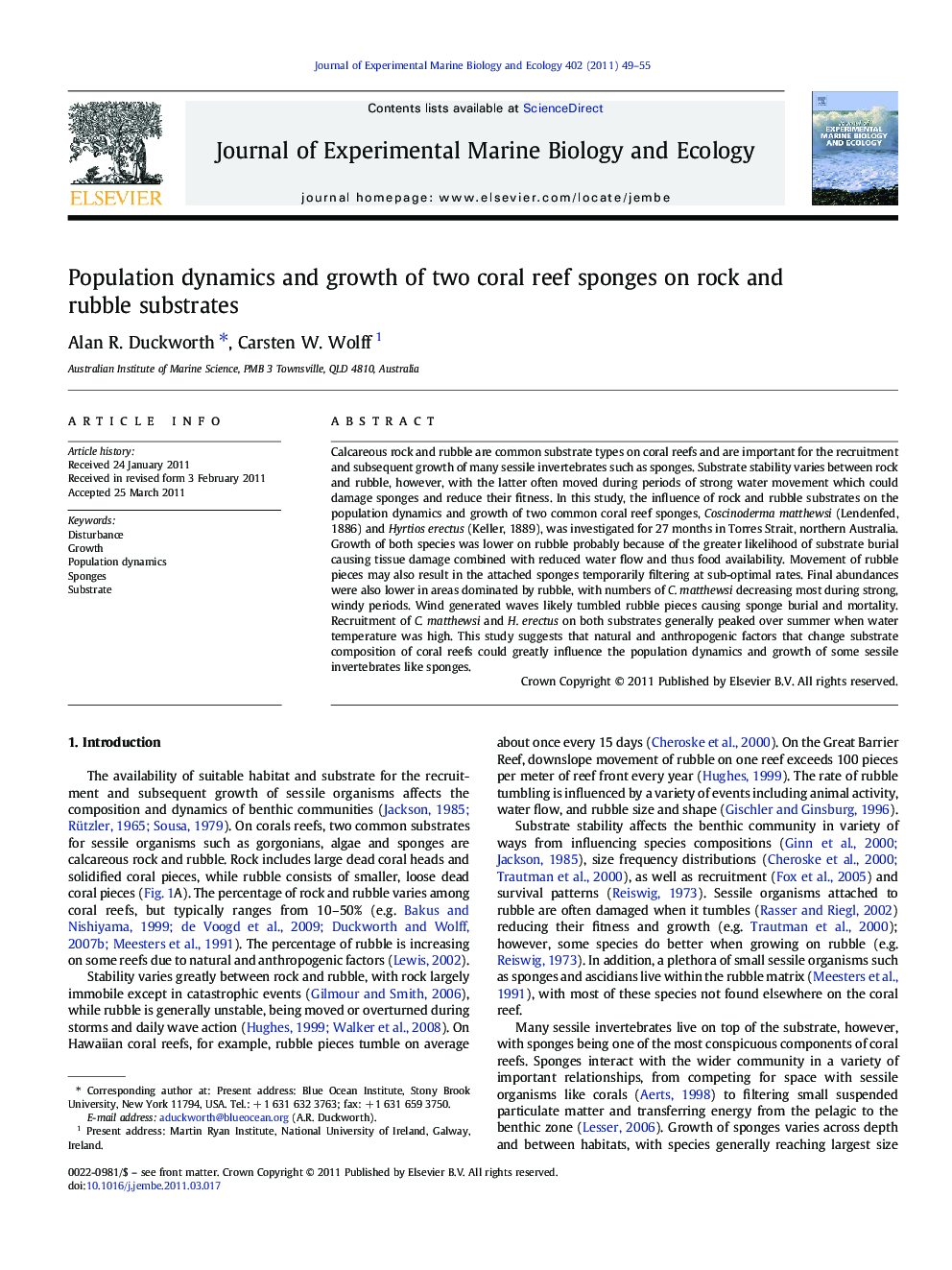| Article ID | Journal | Published Year | Pages | File Type |
|---|---|---|---|---|
| 4396241 | Journal of Experimental Marine Biology and Ecology | 2011 | 7 Pages |
Calcareous rock and rubble are common substrate types on coral reefs and are important for the recruitment and subsequent growth of many sessile invertebrates such as sponges. Substrate stability varies between rock and rubble, however, with the latter often moved during periods of strong water movement which could damage sponges and reduce their fitness. In this study, the influence of rock and rubble substrates on the population dynamics and growth of two common coral reef sponges, Coscinoderma matthewsi (Lendenfed, 1886) and Hyrtios erectus (Keller, 1889), was investigated for 27 months in Torres Strait, northern Australia. Growth of both species was lower on rubble probably because of the greater likelihood of substrate burial causing tissue damage combined with reduced water flow and thus food availability. Movement of rubble pieces may also result in the attached sponges temporarily filtering at sub-optimal rates. Final abundances were also lower in areas dominated by rubble, with numbers of C. matthewsi decreasing most during strong, windy periods. Wind generated waves likely tumbled rubble pieces causing sponge burial and mortality. Recruitment of C. matthewsi and H. erectus on both substrates generally peaked over summer when water temperature was high. This study suggests that natural and anthropogenic factors that change substrate composition of coral reefs could greatly influence the population dynamics and growth of some sessile invertebrates like sponges.
Research highlights► Rock and rubble are common substrates on coral reefs. ► Rock is generally immobile, while rubble is often moved around by water movement. ► Two coral reef sponges grew slowest on rubble, probably because of burial and damage. ► Final abundances of both species were also lowest in rubble dominated areas. ► Substrate stability can influence sponge growth and population dynamics.
